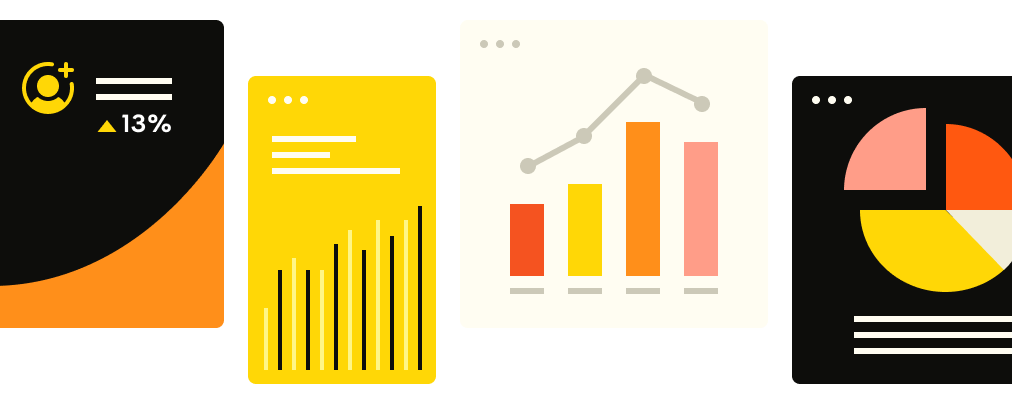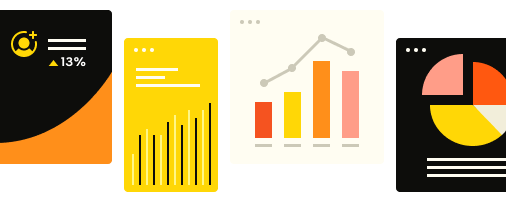How to optimize your member journeys for a better subscription experience

Subscriber expectations constantly change; however, a compelling experience remains a top driver for revenue. Over 90% of consumers said they’d spend more with brands that offer streamlined experiences, while businesses enjoy 1.7x higher customer retention when prioritizing customer experiences.
Let’s review five effective strategies you can start working on today to enhance your subscriber experience.
Why optimizing the subscriber experience is important
Customer experience optimization balances what your subscribers want vs. what your company can offer. For subscriptions, your value proposition is related less to single purchase decisions and far more to the promise of delivered value over time.
While it's important to differentiate your subscription business through new features or competitive pricing, many direct-to-consumer (DTC) brands focus on enhanced customer experience to keep their recurring revenue growing.
Five ways to optimize the subscriber experience
Here’s an overview of what you can do to revamp your subscriber experience:
1. Create or review your customer journey map
The customer journey map is one of the most effective tools to understand your customer base. These maps are a visual representation of subscribers’ interactions with your brand–from sign-up to renewal to cancelation. It outlines all subscribers' interactions with your business, describes their pain points, and shows how your product can solve them.
Since not all subscription members are the same, customer cohorts are handy in this process. Separate subscribers into smaller groups based on plans, acquisition channels, location, demographics, interests, behaviors, churn likelihood, or any other variable you consider better fits your business.
This way, you can identify all your customer personas, their expectations, and preferences to design a dedicated strategy for each. Are there any gaps between what each of them wants and what they get? Start there.
2. Understand subscriber motivations–and personalize for them
With all the subscription offers out there, what makes consumers choose to your product? For starters, 75% of consumers said they’re more likely to subscribe if a free trial is offered. Understanding motivations and pain points helps you customize your subscriber experience for each persona.

Customization in subscriptions lies at the heart of flexibility–in plans, billing, payments, and promotions. Analyze your buyer’s journey to make the most of your touchpoint interactions to design unique experiences.
Here are four ways to personalize your subscription offers:
Plan and billing models
Let longtime customers add one-off purchases and decide on billing cadence and plan length. Design a pricing strategy with several billing models—prepaid, fixed, usage and quantity-based, ramp pricing, and hybrid models, all across different billing frequencies.
Effortless payments
Think of payments as growth catalyzers. Allowing multiple payment options and currencies streamlines checkouts and improves conversions. Recurly, for example, integrates with 22 gateways, offering 140 currencies and 18 different languages to make cross-border transactions easy.
Tailored promotions
52% of customers expect customized offers when purchasing from a brand. Acquire new subscribers and drive loyalty with free trials, coupons, discounts, and gift subscriptions that accommodate your customers’ needs.
Free trials: Trial periods are one of the most effective acquisition strategies as they let cautious customers test before they buy.
Coupons and discounts: Everyone loves discounted pricing, and coupons are a great way to maximize revenue, awareness, and adoption.
Gift subscriptions and cards: Gifting options are popular, especially during the holidays, because they're budget-friendly and easy to purchase and deliver. Additionally, they let you reach potential subscribers.
Cancel alternatives: There comes a time when consumers may consider canceling their subscriptions. You can encourage them to stick around longer with a pausing option.
3. Ask subscribers for feedback–and action on it
Avoid assuming consumer preferences based on their behavior or interactions within your product. Instead, run a quick survey to ask them how they feel, what they enjoy and don’t, and the improvements they’d like to see.
The results of these surveys don’t just benefit your customer experience team. They help your engineering team spot product deficiencies, marketers understand what drives behavior, and the product team know what is most or least impactful for subscribers.
4. Test, learn, iterate
Experiment to discover the best acquisition and retention strategies for your customer base. Testing goes beyond your product. Subscriber experience extends to your website, social media, emailing, support experience, and all customer-facing channels.
You can test dozens of elements within your subscriber member journey–quick wins include A/B testing with pricing, plans, and promotions. Every test you run should have a great end goal: delivering greater value. Ensure the same ease of experience and consistency across every touchpoint for a holistic, omnichannel approach.
5. Measure your optimization results
Alongside your marketing campaign KPIs, measuring the effectiveness of optimizations requires analyzing the right subscription metrics:
Lifetime value (LTV)
Subscriber LTV is an essential metric to keep an eye on. This is a forecast of the total revenue you can expect from a single subscriber over the period they remain with you. It helps identify your most and least profitable subscribers and how much money you should spend on acquisition to maintain profitability.

Customer acquisition cost (CAC)
This essential metric calculates all the costs of acquiring a new subscriber, including marketing, sales, and related headcounts. Your CAC will tell you the effectiveness of your sales and marketing efforts and how long before you can expect to start profiting from your subscribers.

LTV: CAC ratio
A great way to measure subscription customer acquisition and your optimization efforts within the first stages of the member journey is to analyze the ratio and impact of lifetime value (LTV) to customer acquisition cost (CAC).
When combined with CAC, LTV will tell you if you’re spending too much to acquire consumers in relation to what they’re worth.

LTV that exceeds CAC helps identify your most profitable acquisition campaigns. Aim for a 3:1 ratio as your standard. A 5:1 ratio, for example, means you could be growing faster and should invest more in your marketing efforts.
Get the guide: How DTC brands are driving growth and LTV through subscriptions
Keep track of your optimizations. Create performance reports by cohort to analyze performance and identify high-profitable subscribers and trends.
Pro tip: Recurly lets you capture key subscriber data from marketing and CRM systems to present a full view to empower better decisions.
Supercharge your subscriber experience
It all comes down to this: Are you delivering the value your consumers expect? Given the importance of customer experience in acquisition and retention, companies must prioritize it.
Leading subscription brands like BarkBox and Twitch focus on a holistic approach to drive loyalty and revenue. Optimization plays a significant role in that strategy.
Revamp your subscriber experience strategy with this guide, which includes seven strategies for subscription success.

